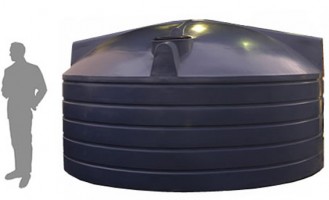lotusgirl81
New Member
- Joined
- Aug 17, 2017
- Messages
- 2
- Reaction score
- 0
I have a small tank that holds around 30L (I think that's about 5.5g?) and set it up about a year ago as a shrimp tank. I cycled it without any problems and put about 15 red cherry shrimp in but haven't had any joy - they never bred and over the year gradually died one by one so that now I only have one left. I'm keen to have another go (maybe with a few very small fish this time too) but don't want to restock the tank if the same thing is going to happen.
I'm wondering if it might be because our tap water is very variable in it's parameters. The town where we live draws its water from a river which has very variable flow seasonally, and also runs high at times with water let out of a massive dam only a few kilometres upstream. At the moment the water out of the tap has a pH of about 7.2 and is very very soft - kH and gH are both very low. However, at times during the year the pH has been up around 8.5 (not sure about the hardness, I've only just started testing that).
I know the cycle is still good - I've tested ammonia/nitrites/nitrates regularly and never get readings above 0, and this week took my last poor RCS out for 24hrs and put some ammonia in to double check it. It dropped from 4ppm to 0 in about 12hrs, and my one remaining shrimp went back in and is happy at the moment.
I do have access to rainwater which we collect in a tank off our roof for the garden. We live in a small country town so pollutants aren't likely to be a problem. Would this be a better source of water than tap water given that the tap tends to fluctuate a lot? If so, should I still use a water conditioner just in case or does it not need one?
I'm wondering if it might be because our tap water is very variable in it's parameters. The town where we live draws its water from a river which has very variable flow seasonally, and also runs high at times with water let out of a massive dam only a few kilometres upstream. At the moment the water out of the tap has a pH of about 7.2 and is very very soft - kH and gH are both very low. However, at times during the year the pH has been up around 8.5 (not sure about the hardness, I've only just started testing that).
I know the cycle is still good - I've tested ammonia/nitrites/nitrates regularly and never get readings above 0, and this week took my last poor RCS out for 24hrs and put some ammonia in to double check it. It dropped from 4ppm to 0 in about 12hrs, and my one remaining shrimp went back in and is happy at the moment.
I do have access to rainwater which we collect in a tank off our roof for the garden. We live in a small country town so pollutants aren't likely to be a problem. Would this be a better source of water than tap water given that the tap tends to fluctuate a lot? If so, should I still use a water conditioner just in case or does it not need one?





